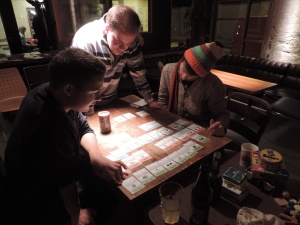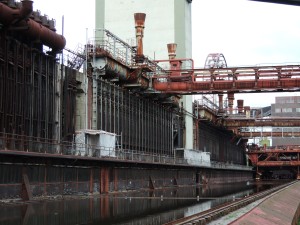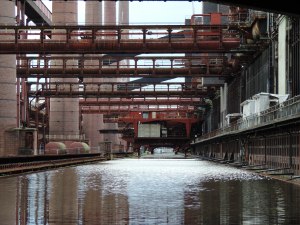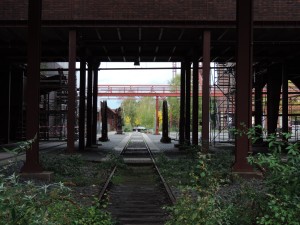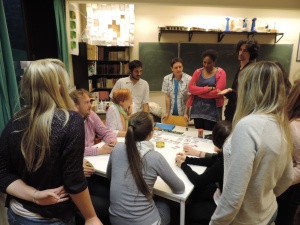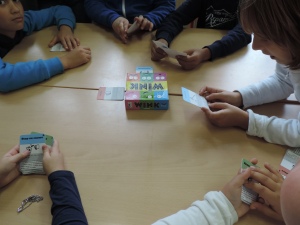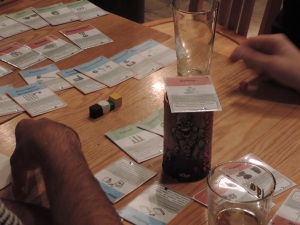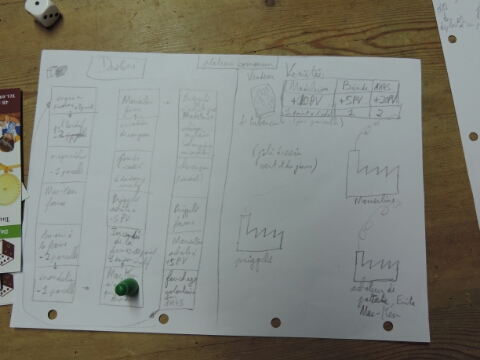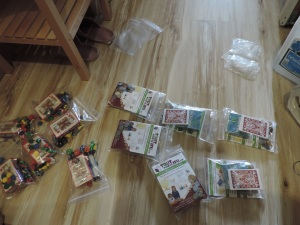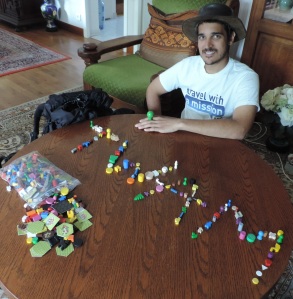Leaving Germany didn’t mean leaving german-speaking countries as my path led me to Austria. I didn’t know much about this country nowadays, especially in terms of board games creation despite the presence of a rather big publisher named Piatnik, so it was the perfect time to discover it a bit more.
My trip there started by one week of “holidays” focused on discovering cities and interesting places – I was joined by my girlfriend Stéphanie – then followed up by 4 days of workshops in Innsbruck in a structure named Die Bäckerei. I decided to summarize my board games experiences in this article then to follow up by another one focusing a bit more on the cities I passed through.
Vienna – Spielebox, the toy library organizing workshops
I didn’t plan anything else in Vienna than spending time with Stéphanie (and seeing an old friend working in virtual reality, but this will be explained later). However, our host happened to be 5mn from a big toy library named Spielebox (toy box in German) – call it fate maybe ? Anyway, we decided to take a look.
The toy library itself has its share of games. Being refueled by Piatnik and funded by the city helps them a lot to have both old, classic games and new, trendy ones directly brought from the Spiele messe of Essen. You can also rent games for a very low price – 10cts a day.
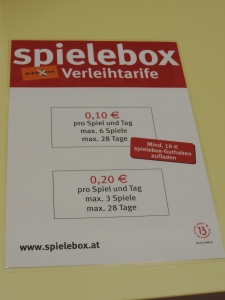
Looks like a nice place, right ? Yet the best part is coming now : they organize board games design workshops. A workshop lasts about 3 hours, involves material such as pawns, dices, tokens… and is animated by actual designers from Piatnik.
Sounds familiar maybe ? I was amazed and very enthusiastic to see other people actually doing workshops in a sort of similar way. I didn’t have the occasion to witness one of those workshops, but I’ll surely keep that in mind for another trip to Vienna. Anyway, I am not alone ! Long live board game design for all !

Graz – Ludovico, board games before it was cool
Graz is a city I was looking forward to visit mostly to meet a couple of friends met years before Nowhere. They led me to Ludovico, another toy library where I could meet Arno Hofer, who has been working with board games for one hell of a long time.
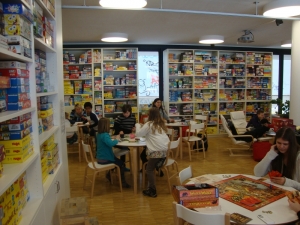
Image taken from http://www.sunny.at/
Arno was enthusiastic with the workshops but couldn’t host them at the moment because Ludovico is organizing a games festival. Maybe another time tho. Who knows – board games is a small world after all.
Ludovico is also renting games for a cheap price and lending games to play within the structure.
Innsbruck – A board games cafe and Die Bäckerei workshops
I spent an evening in the Weli cafe in Innsbruck, a cafe with board games available for renting. Each game costs 58cts (?…) to rent. Most board games cafes I saw so far were focused on gaming, with lots of tables full of gamers pushing pawns and rolling dices, but in Weli it seems that people were more into the “cafe” part, with people joyfully drinking pints together while playing some cards or Trivial pursuit instead of the huge tabletop wargames or fun party games I’m used to see in this environnement. Don’t get me wrong, this is by no means “worse”, just different from what I’m used to !
No workshops there tho, just some playing. The workshops were supposed to take place in Die Bäckerei, cultural center, the first structure I’ve found some months ago already.
Unfortunately, only one workshop took place there, saturday in the late afternoon. People there were mostly couchsurfers I invited myself. It seems that nobody saw that the workshops were actually planned to begin with, despite the structure sharing the info via Facebook and Twitter. Without going into details, this experienced taught me a lot about how to run a successful workshop with an open structure – let’s say more planning is necessary from my side.
In any case, the workshop itself was interesting. The people there weren’t much hardcore gamers and couldn’t stay for more than 2 hours, so we stuck to the “analysis and upgrade” part of the workshop.
Another article is coming soon to share my non-board games experiences of Austria with you. For now, I’m resting from a bad leg tendinitis so I don’t have much more to do anyway 😉 I should be up and ready for the next workshops :
– 19 November in Graz;
– 25 & 27 November in Ljubljana;
– 1 & 2 december in Lucenec, Slovaquia.


